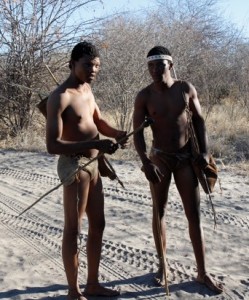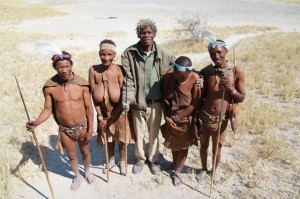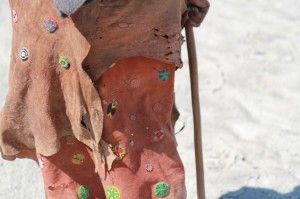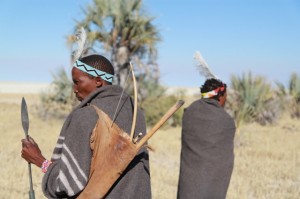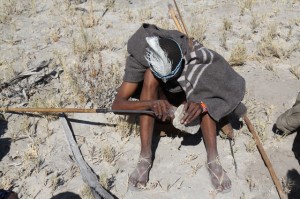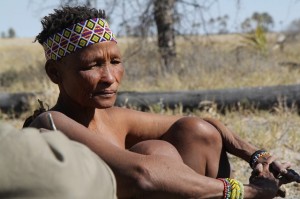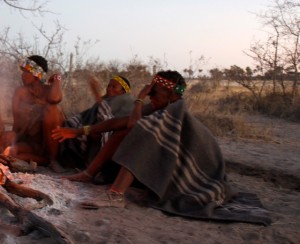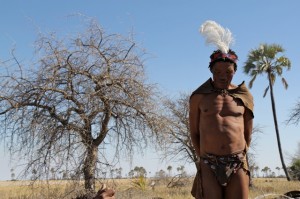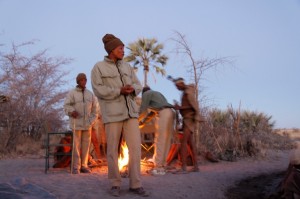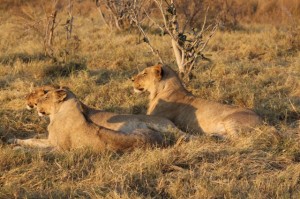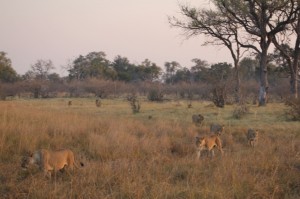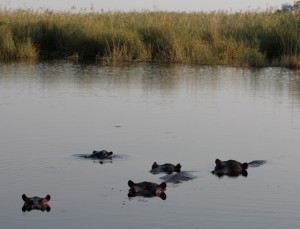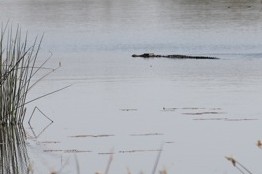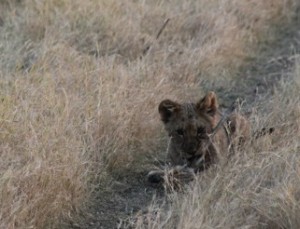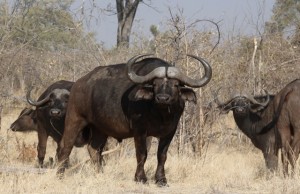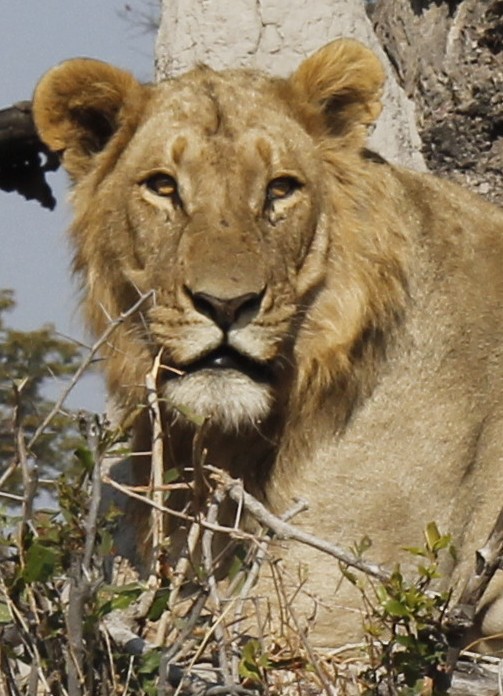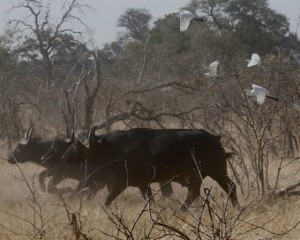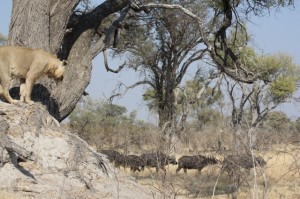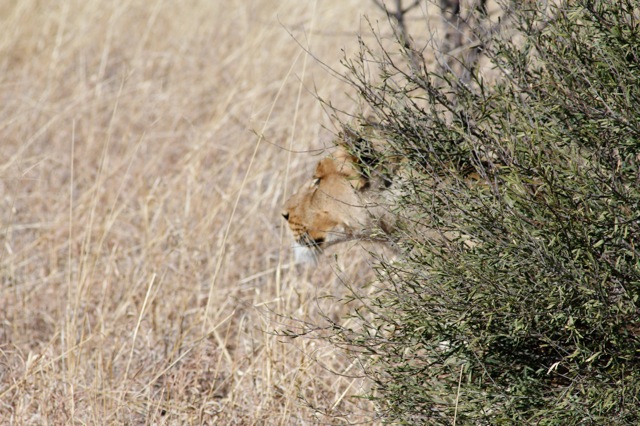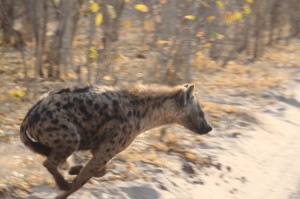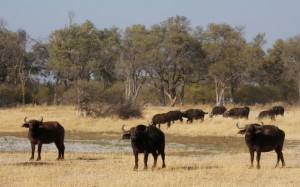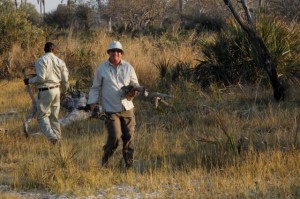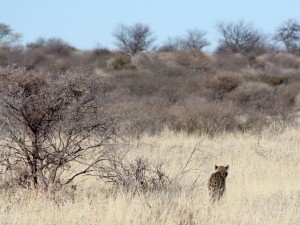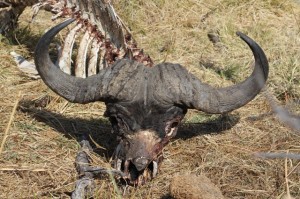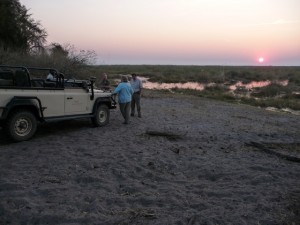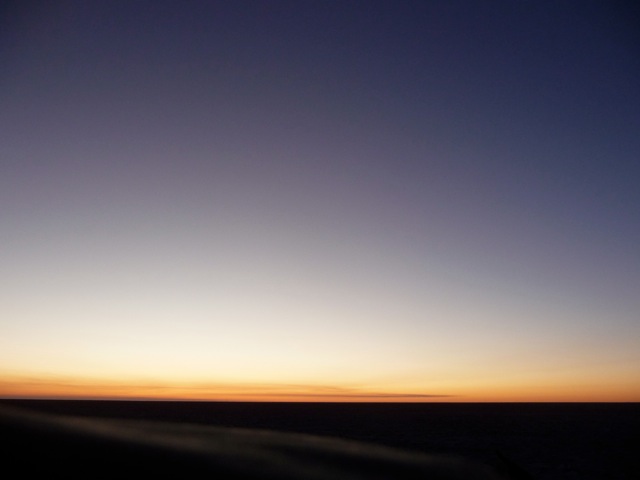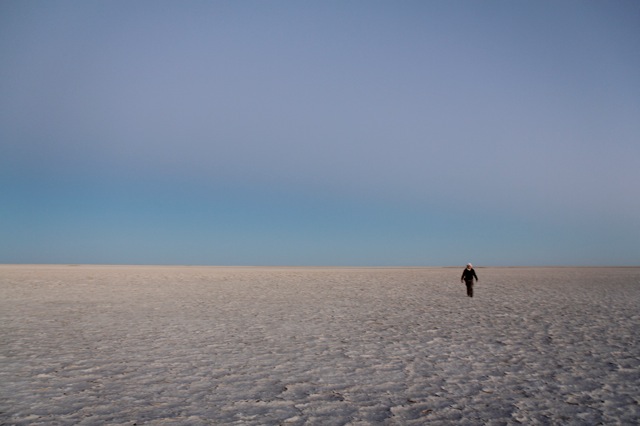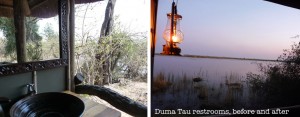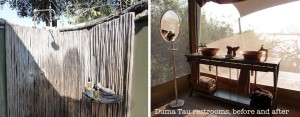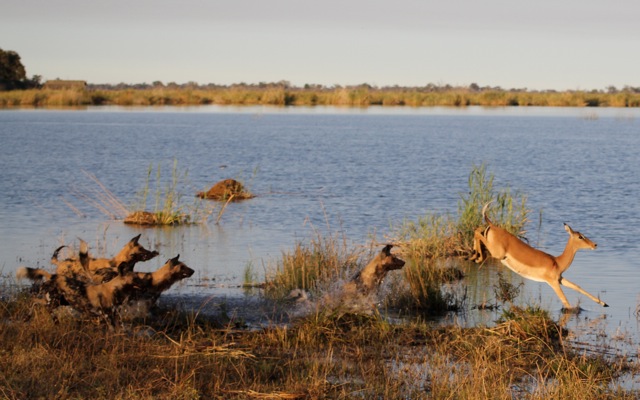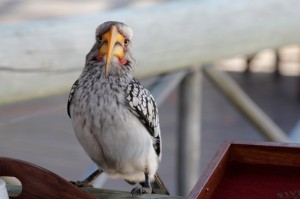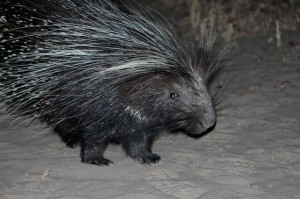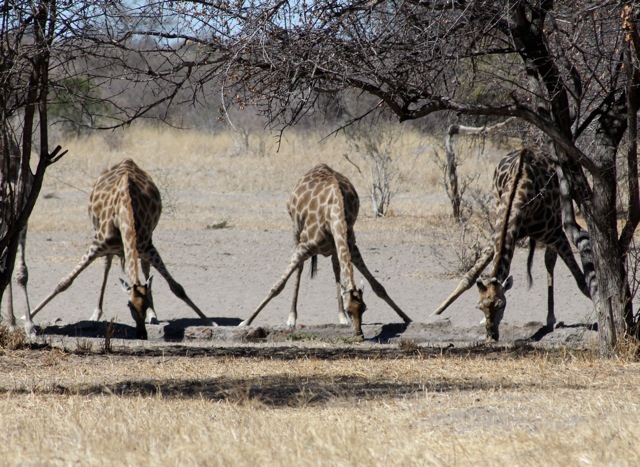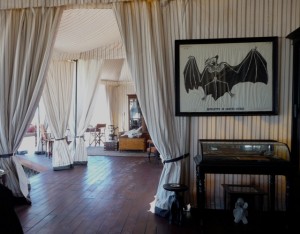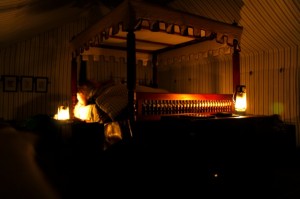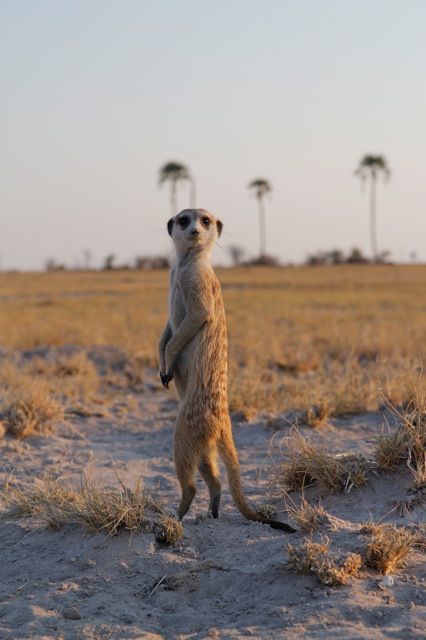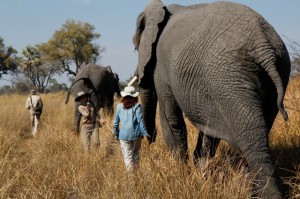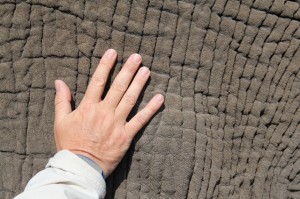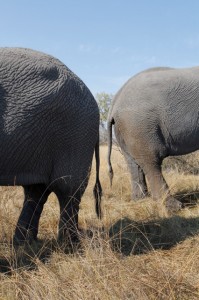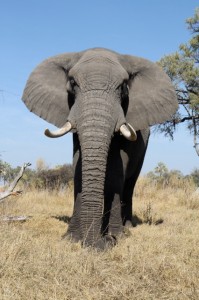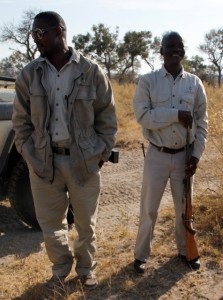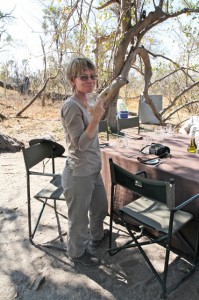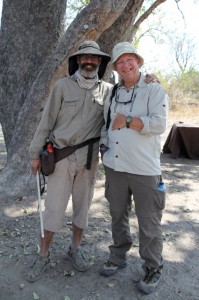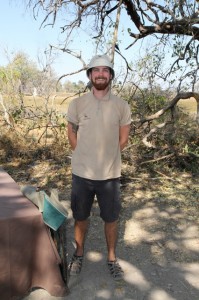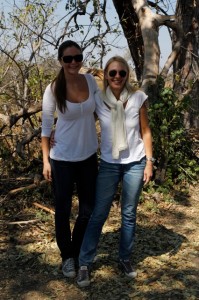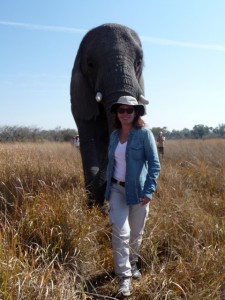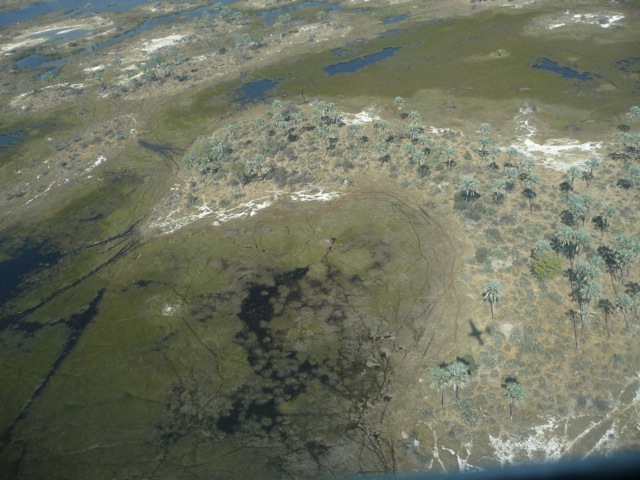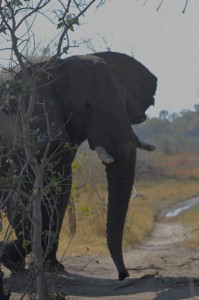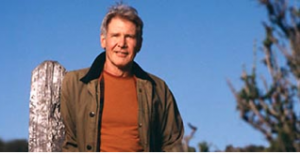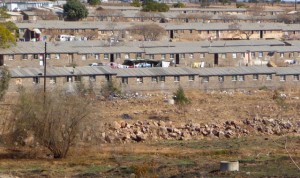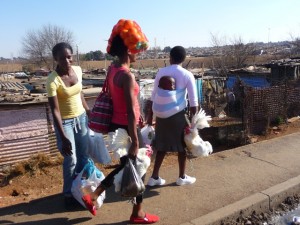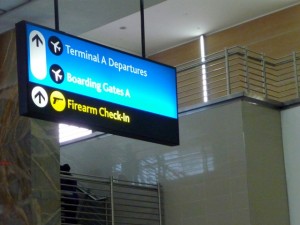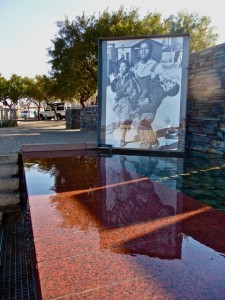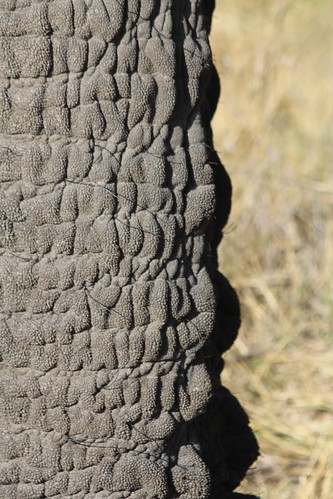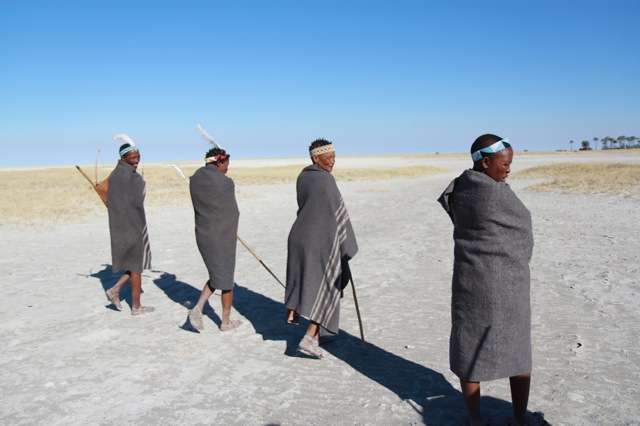 Today we are in the Kalahari desert, marveling at the intricate beading and treated skins worn by the nomadic San, once known as the bushmen. This remarkable community has thrived living in some of the most extreme, hostile land on earth. During our stay temperatures have gone from -7 in the morning, up to 27 by afternoon. Today, the San live a modern life style, and dress accordingly, but they are proud to share their traditions and knowledge with visitors, offering guided visits of the bush. These visits hlp them pass their quickly dying heritage on down to the younger generation, teaching us how to find water, build a fire, and dress.
Today we are in the Kalahari desert, marveling at the intricate beading and treated skins worn by the nomadic San, once known as the bushmen. This remarkable community has thrived living in some of the most extreme, hostile land on earth. During our stay temperatures have gone from -7 in the morning, up to 27 by afternoon. Today, the San live a modern life style, and dress accordingly, but they are proud to share their traditions and knowledge with visitors, offering guided visits of the bush. These visits hlp them pass their quickly dying heritage on down to the younger generation, teaching us how to find water, build a fire, and dress.
Xarugke (pronounced Gah-rue-Ha) was our tracker in the central Kalahari. He’d sit at the front of our Land Cruiser, perched on a make-shift seat above the passenger side headlight, looking for tracks, and when he found something interesting, he’d hop down and start tracking, following winding lion prints through dense bush. He chose one afternoon to dress in his traditional springbok skin and share some of his culture with us.
Out on the Makgadikgadi salt pans thick woolen blankets protect against the frigid morning air, but they are quickly dropped as the sun rises.
Fashion is not a silly indulgence of the West. San women spend hours embroidering bright, cheerful beads in to their springbok skin outfits, and the men’s wildebeest tops. Steenbok is the preferred leather for the men’s handbags, and they are the only garment not decorated. Perhaps because they exist to tote around poison arrows to the hunt.
I even spotted a Loubou-shman fixing a lady’s antelope skin sandals while the others were digging for scorpion.
And jewelry has an important place, with gorgeous beaded pieces being worn around the head, wrists, fingers and ankles. Anything that can be adorned, without interfering with practical daily life, is made discretely colorful. Men get to wear a jaunty ostrich feather to complete the look.
Modern uniforms have become a status symbol that family members reserve for translators and guides, while their children get practical winter hats and wear sensible, western sneakers. It is nice to dress-up in one’s finest, but practicality rules the day, fashion be damned.


